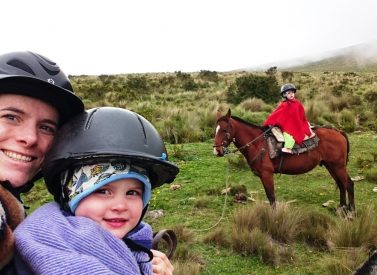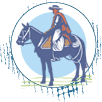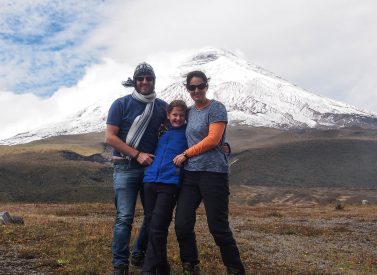Buyer’s Guide to Otavalo Market: From Souvenirs to Jewellery
 by Tom Shearman on 7th October, 2022
by Tom Shearman on 7th October, 2022

The picture-postcard and colourful indigenous artisan Otavalo market is surrounded by dramatic Andean peaks in the heart of Ecuador.
Handmade crafts and textiles of incredible quality have helped make Otavalo a traveller’s favourite and the largest market of its kind in all of South America. The Otavalo Market is authentic and dates back to pre-Incan times. Locals came to trade food, woven products and more.
The modern Otavalo market in Plaza de los Ponchos is full of enormously-talented artisans who make beautiful gifts. These range from intricate jewellery to cosy socks and soft alpaca sweaters.
Tasty food and delicious drinks abound, too, making it a must-visit for anyone looking for a sensory delight. Find out how to get there, what to buy, and eat, when to go, and more.
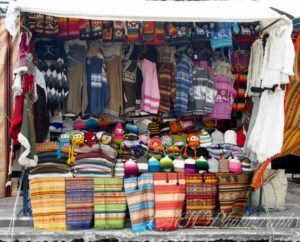
Where is Otavalo Market in Ecuador?
Otavalo market is in Otavalo, a town of around 50,000 people around 55 miles (90 km) north of Ecuador’s capital, Quito. It takes approximately two hours by public transport and 90 minutes by car to travel to Otavalo through stunning mountain scenery.
The primary artisan market is in the town centre’s main square, Plaza de Ponchos. It’s a short distance from the bus station and close to cafés and restaurants if you need to rest those shopping bones. Signs help visitors find their way to the market, but friendly locals will also show you the way.
Imbabura volcano soars over and looks upon the comings and goings of the Plaza’s market workers and shoppers. The town sits at around 2,500m (8,200 feet), a lower altitude than Quito. High altitude shouldn’t be a problem for most unacclimatised people here, as long as you drink lots of water and amble.
Who Are the Otavaleño People?
Otavalo resides in a predominantly indigenous-populated zone. Many Otavaleños you’ll see — also known as Kichwa Otavalo — wear traditional clothes. Local men don ponchos and felt hats, and women wear brightly-embroidered blouses with red-bead bracelets and gold-bead necklaces as adornments.
Many locals speak Kichwa, a variant of Peru and Bolivia’s Quechua, as well as Spanish.

When Is the Best Time to Visit Otavalo Market?
Otavalo market is open from 7am to 6pm every day. Avoid arriving late because some vendors pack up in the early afternoon.
Saturday is the busiest day when all the artists descend to display their wares and there is a nearby animal market, too. The stalls spill out from Plaza de Ponchos and engulf much of the town’s streets.
Wednesday is also a busy day. Visiting on other days means fewer stalls, but there are still many to choose from and fewer crowds, making for a more pleasant experience.
Day trippers arrive around 10-11am, and the market is busiest from then until about 3pm. You can avoid the crowds by staying overnight either in or near the town and perusing the stalls early.
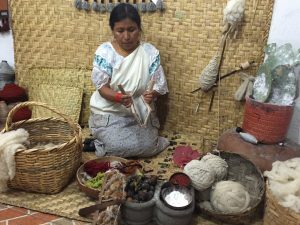
What Can I Buy at Otavalo Market?
Otavaleños are world-renowned for their weaving and textiles; blankets, wall hangings, and tablecloths are just some of the wonders you’ll find.
Super soft alpaca blankets and sweaters are popular, and the eye-catching colours add to their cosy charm. Try the hats and ponchos, and look for llama wool products, too. If the indigenous style is too bright for you, fear not; the local artists have adapted to modern tastes within their repertoires.
Bags, purses, and duffel bags are popular, with wool and leather prominent materials. You can even buy an inexpensive bag to carry your Otavalo market purchases. Many artists bring their evocative paintings, weavings, and sculptures to sell to art lovers.
Another big draw is the jewellery. Silver is a popular material, and earrings, necklaces, and bracelets are skilfully smithed around semi-precious stones like turquoise. The work is intricate and personal to each artist, and these make fantastic, easily-portable souvenirs and gifts.
Traditional beaded necklaces are ubiquitous, as are T-shirts, mugs, and glassware. All too much? Grab a hammock. You’ll also see many products made with Tagua, a smooth nut native to Ecuador.
If you want something traditional, check these:
- Beautifully-embroidered blouses
- Anacas: a skirt made from a piece of fabric
- Gualcas: Stunning necklaces, some made of gold-covered glass
- Shawls
- Alpargatas: Shoes similar to espadrilles
- Woollen ponchos
- White shirts
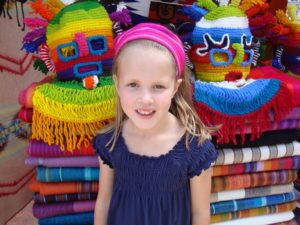
Quick Otavalo Market Haggling Tips
The sheer number of vendors at Otavalo market makes it a great place to pick up a bargain. Many people find they can find the best prices in Ecuador at Otavalo.
However, it’s easy to overpay, especially if you don’t know the approximate values of items and that the market employs a bartering system. There are a few tips and protocols to observe before buying.
Walk around: Look at what’s about and politely enquire about the price of items that interest you. Don’t start haggling over the first things you see — your initial sweep will help you gauge values.
Focus on the prize: Find the item you wish to buy, knowing its approximate worth across the market. Only start trying something on or haggling if you really want to buy the item. Then ask the price. “Cuanto cuesta?”
Go low: Vendors will push up the price to start, hoping to find a non-haggler. This could mean double its price — your earlier investigation will have helped.
Open with a low offer, as low as you dare, but not insulting. For example, a $40 sweater may open with a request for $70. Don’t offer $3 – start at around 50% of the opening gambit, e.g., $35. Think over any new offers and take your time. A rule of thumb is to pay 60-65% of the initial quote.
Watch those words: Some vendors speak a little English, so your private chats with friends and family may be perfectly understood.
Walk away: Not getting that $70 price down? Walk away. You’ll probably get a counteroffer quite soon.
Buy or don’t: If the price hasn’t dropped or you feel you are overpaying, walk away and don’t buy with a polite “no gracias.” You may find on your next loop of the market that the vendor will lower the price for you.
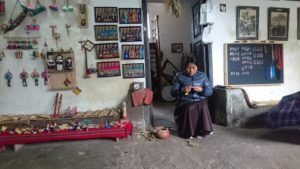
How Can I Pay For Crafts in Otavalo Market?
You can pay by cash throughout Otavalo market and by card in some stalls.
Ecuador uses the USD as its official currency. Take a mix of small, clean bills, with $5, $10, and $20 bills being perfect. Some vendors may struggle to change $50 bills and are reluctant to take a $100 bill.
There are several ATMs close to the Plaza do Ponchos in case you need more cash, or your seller doesn’t accept card payments.
What Food and Drink Can I Enjoy at Otavalo Market?
Shopping is thirsty work that can build up a hunger, too. Ecuador has an abundance of delicious seasonal fruits and vegetables on offer, and some excellent chefs combine them to create sumptuous dishes.
Grilled bananas — try them split with some cheese inside — stewed figs with cheese and bread, and roasted corn are a few on-the-go tasty treats. Wash any fruit you may eat; mangoes, strawberries, and passion fruits are amazing in Ecuador.
For something more substantial, there are many restaurants close to the Plaza and surrounding streets. Look out for these Ecuadorian dishes, often cheap and filling.
- Yahuarlocro: A soup made with potato and tripe
- Locro de papas: Potato soup
- Churrasco: Loosen the belt for this fried beef, chips, fried egg, rice, and salad combo
- Hornado: Roast pork (or try fritada, which is fried pork)
- Corn with beans
Look where the locals eat and join in, checking the food looks fresh and hasn’t been sitting out.
International cuisine is available, too, with cafés and bats serving quality coffees, crepes, pizzas, and even craft beer.
What Is the Otavalo Animal Market?
Saturdays are when the Otavalo Animal Market, La Feria de Animales, comes to life. Farmers descend early in the morning — it’s already in full swing at 06.30 sunrise — to trade animals.
Cows, horses, pigs, guinea pigs (a local speciality!), chickens, rabbits, and even dogs are brought to the market to buy and sell. Some families will bring textiles to sell, too. The market has recently moved to a site about 1.3 miles (2 km) northeast of Otavalo.
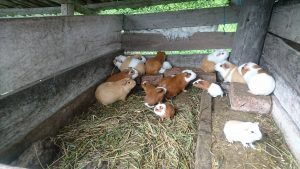
Are There Any Other Markets Close to Otavalo?
Yes! Head to Cotacachi, the navel of Ecuador’s leather industry, to find high-quality jackets, shirts, trousers, and accessories. Cotacachi is about 7 miles (12km) north of Otavalo.
In San Antonio de Ibarra, some 10 miles (16km) northeast of Otavalo, there are excellent carpenters whose carved wood handiwork will catch the eye.
What Visitor Attractions Are Close to Otavalo Market?
Staying overnight before or after Otavalo market provides the perfect opportunity to explore an area replete with lakes, rivers, and volcanoes.
Laguna Cuicocha is a beautiful two-hour walk around a volcanic lagoon with breath-taking views of the Cotacachi and Imbabura volcanoes. Peguche and Taxopamba waterfalls are well worth a visit, and there are some cloud forest lodges within a few hours drive, too.
There are also some pre-Colombian and pre-Incan ruins to explore at Cochasquí, equidistant between Quito and Otavalo. This burial ground has around 20 tombs and 15 pyramids to explore.
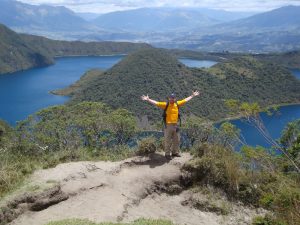
Where Can I Sleep Near Otavalo Market?
Otavalo has a wide range of accommodations to suit every budget and travelling style, from hostels to luxury haciendas in the surrounding countryside.
La Casa Sol Andean Lodge is just outside the town and has a very authentic feel at the mid-range price.
Hacienda Cusin is a lovely historic house outside the town with beautiful grounds and comfortable rooms.
And moving up to high-end, Hotel Medina del Lago offers excellent views from its lakeside location as well as spa treatments and outdoor activities.
Otavalo Market: How to Get There?
A host of private and public tours pick you up from your Quito hotel and take you to and from the market. Many people visit the market and continue to another destination in the area.
Buses to Otavalo frequently leave (about every 20 minutes) from Quito’s Terminal Carcelén bus terminal in the northern part of the city. A one-way ticket is around $2.50-$3, and you can book the return in Otavalo — weekend buses fill quickly. Securing your return to Quito on arrival in Otavalo is a good idea.
Most buses are comfortable but most likely won’t have a toilet or stop for a break.
When Is the Best Weather in Otavalo Market?
The temperatures vary little in this region, holding around 15 degrees Celsius during the day, year-round. Take a hat or use sunscreen because the sun’s rays are intense.
June to September are the driest months. January to April are the months most likely to bring rain. However, afternoon showers are always possible in high-mountain Andean zones.
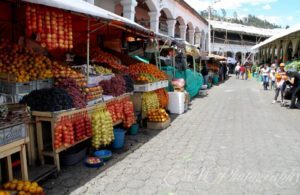
Guide to Otavalo Market in Ecuador
Otavalo market is a jewel in Ecuador’s crown, thanks to its authenticity, colourful handcrafts, and artists’ exquisite craft.
It’s not just about shopping; the food and drink and ambience — with the chance to interact with local Kichwa people — make it a genuine and memorable experience.
Many of our Ecuador tours include a visit to the Otavalo market, with our guides and itineraries ensuring you make the most of your time there. The only real issue at Otavalo is wondering how you’ll get all those souvenirs home! Contact us for more.
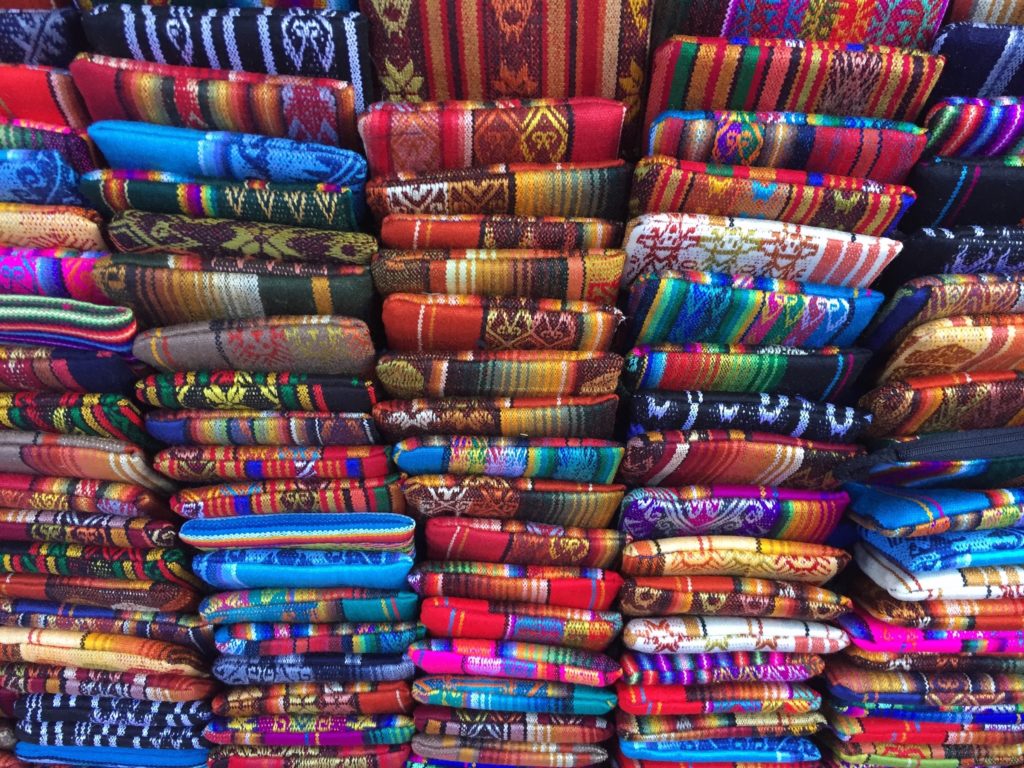
Share


 a Group Tour
a Group Tour  a Tailor Made Tour
a Tailor Made Tour 